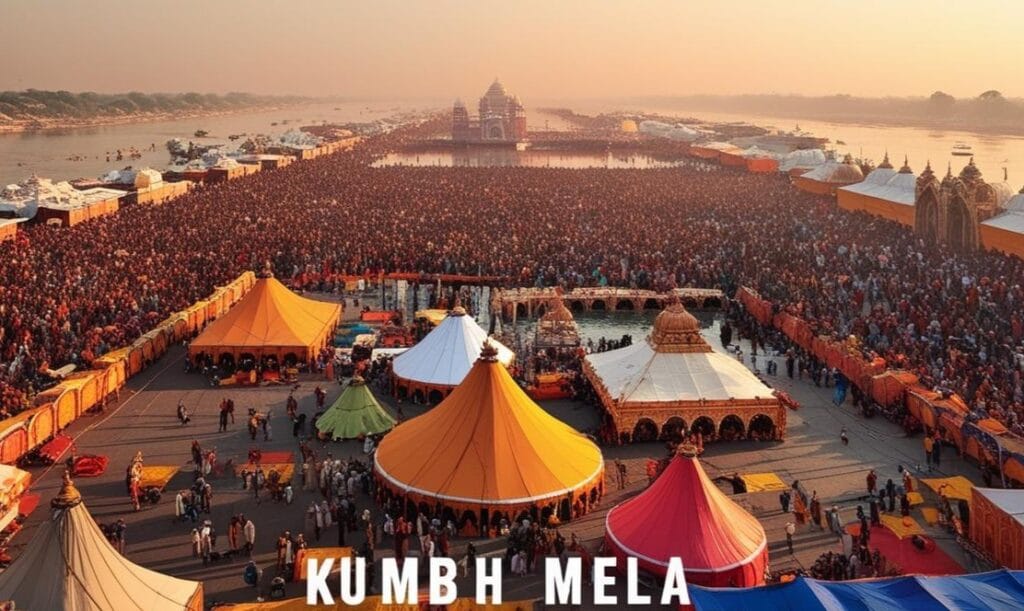Maha Kumbh Mela 2025 is a monumental event in the Hindu calendar, taking place from January 13 to February 26, 2025, at the sacred confluence of the Ganga, Yamuna, and the mythical Saraswati rivers in Prayagraj, Uttar Pradesh. This gathering is expected to attract around 450 million pilgrims, saints, ascetics, and tourists, making it one of the largest religious events in the world. Here’s a detailed overview of the preparations and significance of Maha Kumbh Mela 2025.
Significance of Maha Kumbh Mela
The Maha Kumbh Mela occurs every 12 years and is considered the most auspicious of the Kumbh Melas.
It symbolizes the spiritual quest for salvation and the cleansing of sins through holy dips in the sacred rivers.
The event is steeped in mythology, believed to be the result of the churning of the ocean (Samudra Manthan) where drops of nectar fell at four locations, including Prayagraj.
Venue and Infrastructure
Location: The event will be held in Prayagraj, previously known as Allahabad, which has been designated as a separate administrative district for the duration of the Mela.
Area: The Mela area spans over 40 square kilometers, divided into 25 sections, equipped with housing, roads, electricity, and communication facilities.
Capacity: The infrastructure is designed to accommodate a massive influx of visitors, with plans for 1.8 lakh tents and over 150,000 temporary toilets to ensure cleanliness and comfort.
Logistical Preparations
Transportation: The local government is enhancing transportation facilities, including 101 smart parking areas capable of handling up to 500,000 vehicles daily.
Technology: A dedicated website and mobile app will provide real-time information, while AI-powered chatbots will assist in multiple languages. QR-based passes will streamline entry for pilgrims and vehicles.
Security Measures: Enhanced security protocols include the deployment of 20 drones for 24/7 surveillance, ensuring the safety of attendees.
Healthcare Facilities
Medical Services: Comprehensive healthcare arrangements are in place, including a 100-bed hospital and smaller facilities staffed by over 291 MBBS doctors and specialists.
Special Initiatives: The Indian Army will provide medical services free of charge, and initiatives like the Netra Kumbh will offer eye check-ups and glasses to pilgrims, aiming to distribute over 300,000 pairs.
Environmental Initiatives
Plastic-Free Campaign: Maha Kumbh 2025 aims to be a plastic-free event, with over 1,500 trained volunteers (Ganga Sevadoots) leading cleanliness drives.
Tree Planting: Approximately 300,000 saplings have been planted in and around Prayagraj, promoting environmental sustainability.
Cultural Highlights
World’s Largest Rangoli: A massive Rangoli, measuring 55,000 square feet, is being created to showcase India’s artistic heritage and is expected to set a Guinness World Record.
Record-Breaking Initiatives: The event aims to set multiple records, including the largest synchronized sweeping drive and the largest river-cleaning initiative.
History
The history of the Kumbh Mela dates back thousands of years, with its origins deeply rooted in Hindu mythology and ancient texts. The festival is believed to have begun during the Vedic period, around 2000 BCE, when the sacred rivers were revered as purifying forces. The most significant mythological account associated with the Kumbh Mela is the Samudra Manthan, or the churning of the ocean, described in ancient scriptures like the Bhagavata Purana and the Vishnu Purana.
According to this legend, the gods and demons collaborated to churn the ocean in search of the nectar of immortality (amrit). During this cosmic event, four drops of nectar fell at four locations: Haridwar, Ujjain, Nashik, and Prayagraj, which are now the sites of the Kumbh Mela.
The Kumbh Mela has evolved over the centuries, transforming from a localized event into a grand festival that attracts millions of pilgrims from across India and around the world. Historical records indicate that the Mela was held in Prayagraj as early as the 8th century CE, with references found in texts by prominent saints and scholars. The event gained prominence during the reign of the Mughal Empire, particularly under Emperor Akbar, who recognized its significance and encouraged participation. The Mela became a melting pot of diverse cultures, philosophies, and spiritual practices, fostering a sense of unity among various sects and communities within Hinduism.
In modern times, the Kumbh Mela has continued to grow in scale and significance, adapting to contemporary needs while retaining its spiritual essence. The first modern Kumbh Mela was held in 1954, and since then, it has become a symbol of India’s rich cultural heritage and spiritual diversity. The event has also garnered international attention, with pilgrims and tourists from various backgrounds coming together to experience the unique blend of spirituality, tradition, and communal harmony.
The Kumbh Mela serves as a reminder of the enduring power of faith and the collective human spirit, transcending geographical and cultural boundaries. As we approach Maha Kumbh Mela 2025, the historical legacy of this grand festival continues to inspire millions, reinforcing the importance of spiritual renewal and the quest for enlightenment.
Maha Kumbh Mela 2025 is not just a religious gathering; it is a celebration of spirituality, culture, and community. With extensive preparations underway, the event promises to be a remarkable experience for millions of devotees and tourists, emphasizing the importance of faith, environmental consciousness, and social responsibility. The efforts made by the government and local authorities reflect a commitment to ensuring a safe, clean, and spiritually enriching experience for all attendees.
Check out Pongal 2025: Tamil Nadu’s Vibrant Harvest Festival

